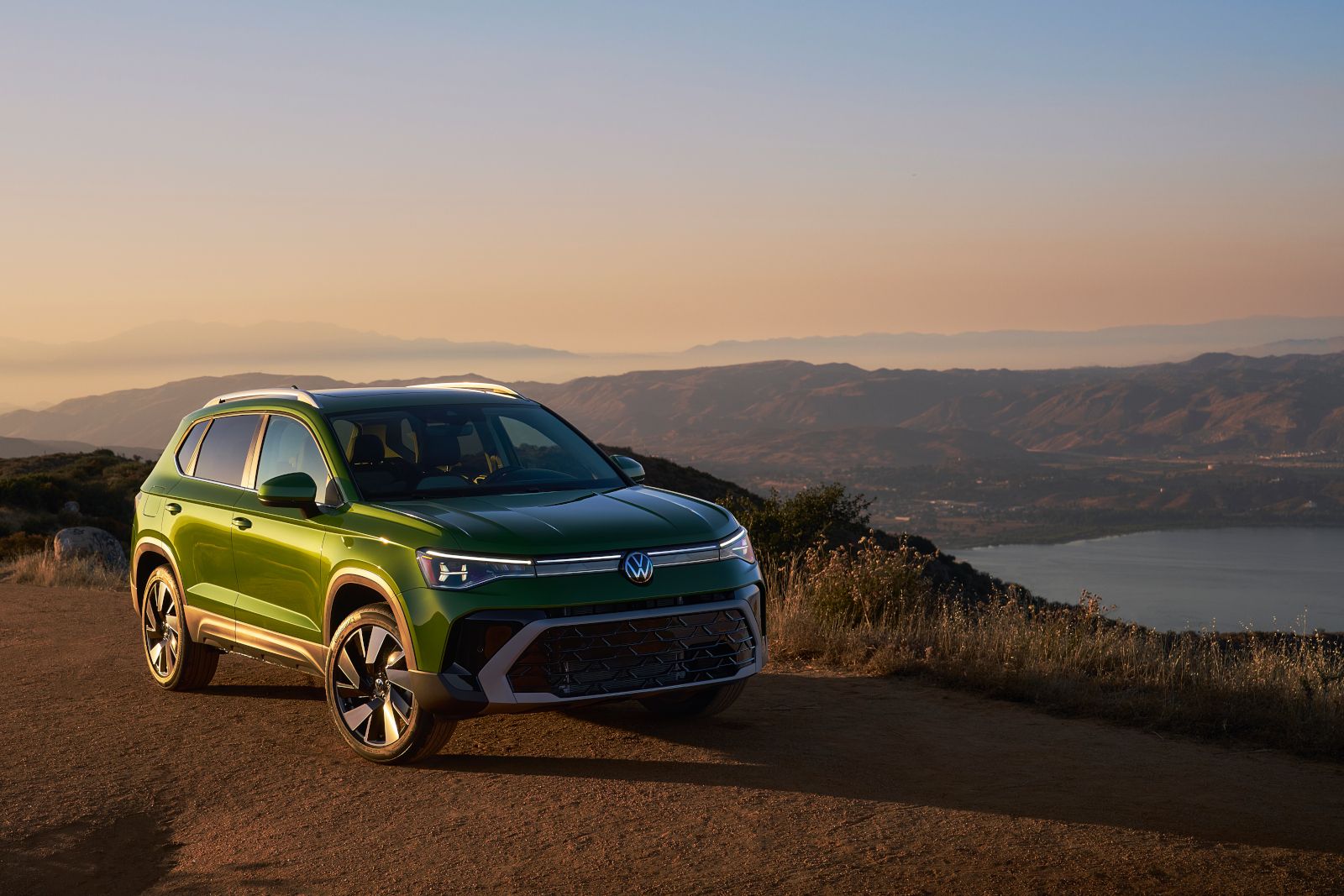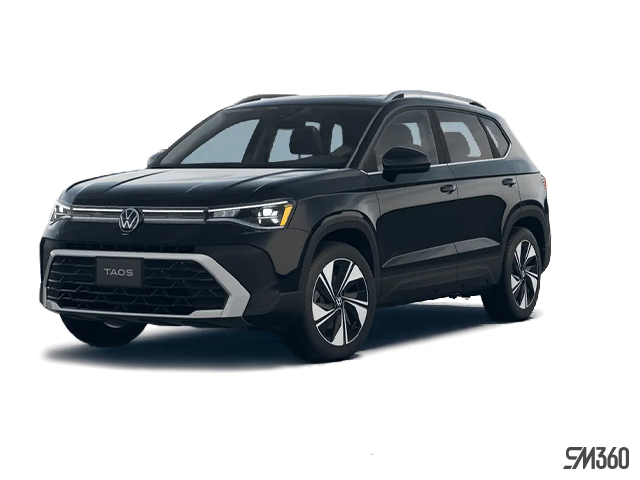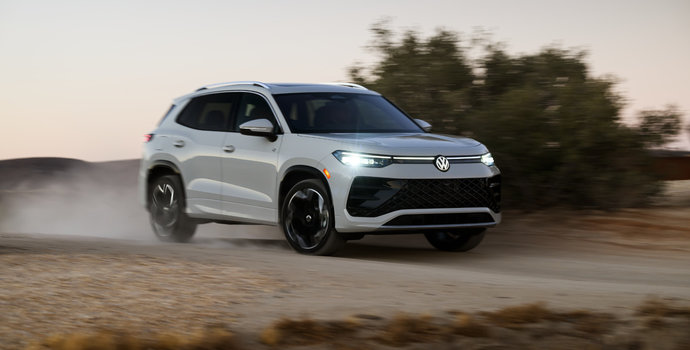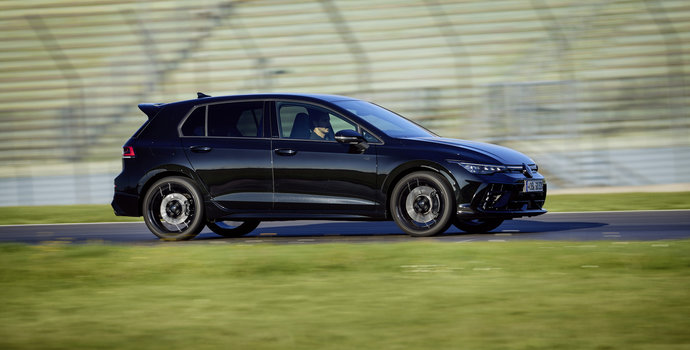Rising fuel prices have made efficiency a top priority for Canadian drivers considering a new compact SUV. The 2025 Volkswagen Taos offers an appealing balance of practicality and fuel economy, but understanding how your driving habits affect annual fuel costs can help you make a smarter purchasing decision. Whether you choose front-wheel drive or all-wheel drive makes a noticeable difference in your yearly fuel budget.
The redesigned 2025 Taos features updated styling, more power, and improved technology. With a starting MSRP of $29,795 for the Trendline FWD model, this compact SUV delivers German engineering at an accessible price point. We can show you exactly what to expect at the pump by examining real-world fuel costs across different driving distances.
2025 Volkswagen Taos Overview
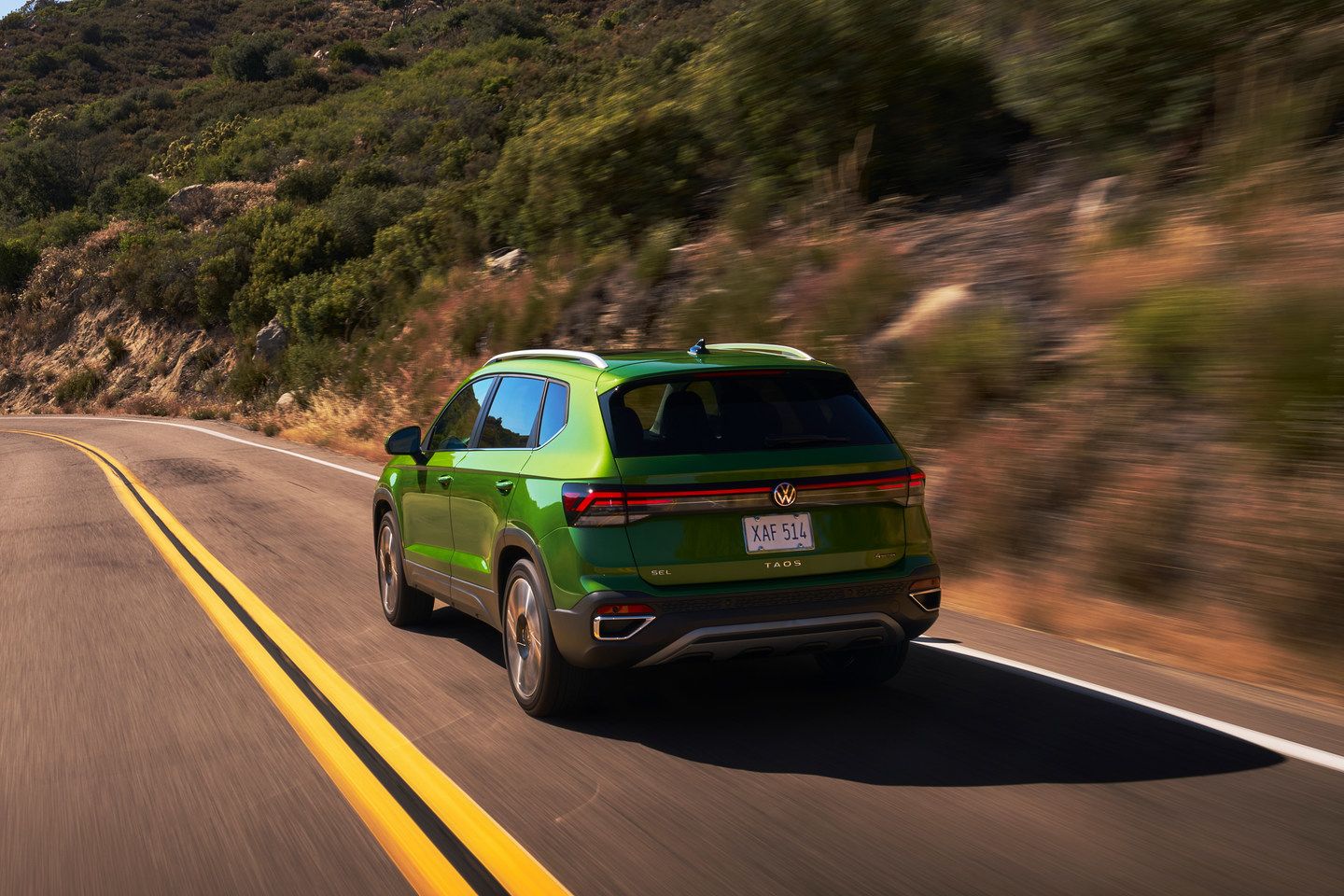
The 2025 Taos features a refreshed design with a more expressive front end. It includes a new bumper design, updated grille with available light bar, and standard LED projector headlights across all trims. Connected taillights and an illuminated Volkswagen badge add to the distinctive appearance. Three new paint colours—Serrano Green Metallic, Monterey Blue Pearl, and Alpine Grey—expand the colour palette alongside existing options.
Inside, the Taos includes a new dashboard design with an integrated 8-inch floating infotainment display standard on all models. The dual-zone automatic Climatronic HVAC system with touch control and new acoustic dampening treatments enhances cabin comfort. Trendline models feature cloth upholstery, while Comfortline trims include leatherette materials. Highline models offer leather seats in both black and the new Blue Night dark blue finish.
Under the hood, all 2025 Taos models are powered by an updated 1.5-litre EA211 turbocharged four-cylinder TSI engine. Hardware improvements include revised piston rings and fuel injectors, a modified turbo housing, a larger intercooler, and a new gasoline particulate filter. These changes increase output from the previous model's 158 horsepower to 174 horsepower and 184 lb-ft of torque.
Engine and Drivetrain Options
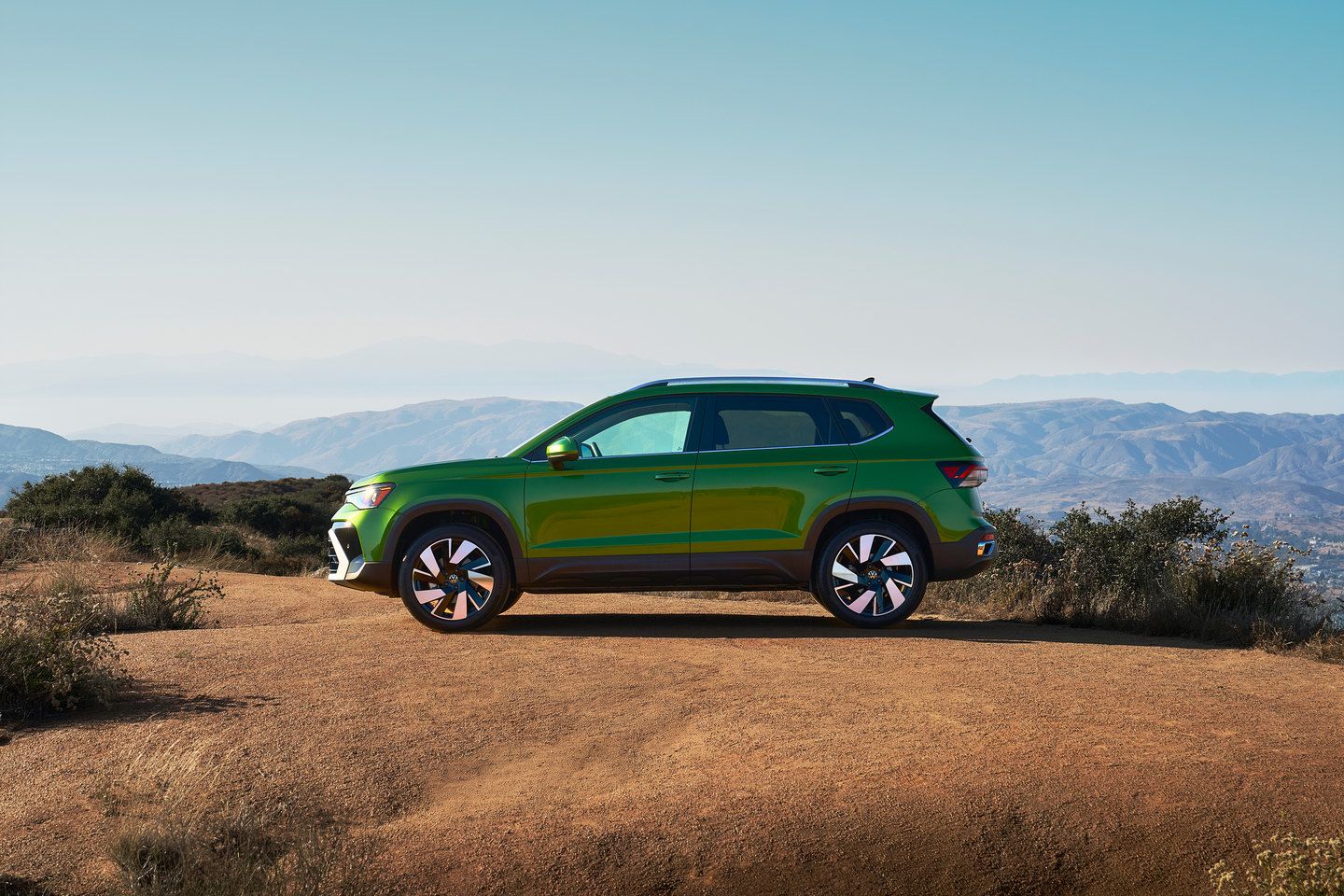
Front-Wheel Drive Models:
- 1.5-litre TSI turbocharged engine
- 174 horsepower and 184 lb-ft of torque
- 8-speed automatic transmission
- NRCan fuel consumption: 8.4 L/100 km city, 6.5 L/100 km highway, 7.6 L/100 km combined
4MOTION All-Wheel Drive Models:
- Same 1.5-litre TSI turbocharged engine
- 174 horsepower and 184 lb-ft of torque
- 8-speed automatic transmission (replaces previous DSG dual-clutch)
- NRCan fuel consumption: 9.4 L/100 km city, 7.2 L/100 km highway, 8.4 L/100 km combined
The 4MOTION all-wheel drive system provides enhanced traction in challenging weather conditions, while the front-wheel drive option maximizes fuel efficiency for daily commuting.
Annual Fuel Cost Analysis
To help you understand how the 2025 Taos affects your fuel budget, we calculated annual costs using NRCan's combined fuel economy ratings and current Toronto fuel pricing of $1.31 per litre. The following table shows estimated yearly fuel expenses based on five different driving distances:
|
Distance (km)
|
Taos FWD (L/100km)
|
Taos 4MOTION (L/100km)
|
FWD Annual Cost
|
AWD Annual Cost
|
Difference
|
|
10,000
|
7.6
|
8.4
|
$995.60
|
$1,100.40
|
$104.80
|
|
15,000
|
7.6
|
8.4
|
$1,493.40
|
$1,650.60
|
$157.20
|
|
20,000
|
7.6
|
8.4
|
$1,991.20
|
$2,200.80
|
$209.60
|
|
25,000
|
7.6
|
8.4
|
$2,489.00
|
$2,751.00
|
$262.00
|
|
30,000
|
7.6
|
8.4
|
$2,986.80
|
$3,301.20
|
$314.40
|
How Your Driving Pattern Affects Fuel Costs
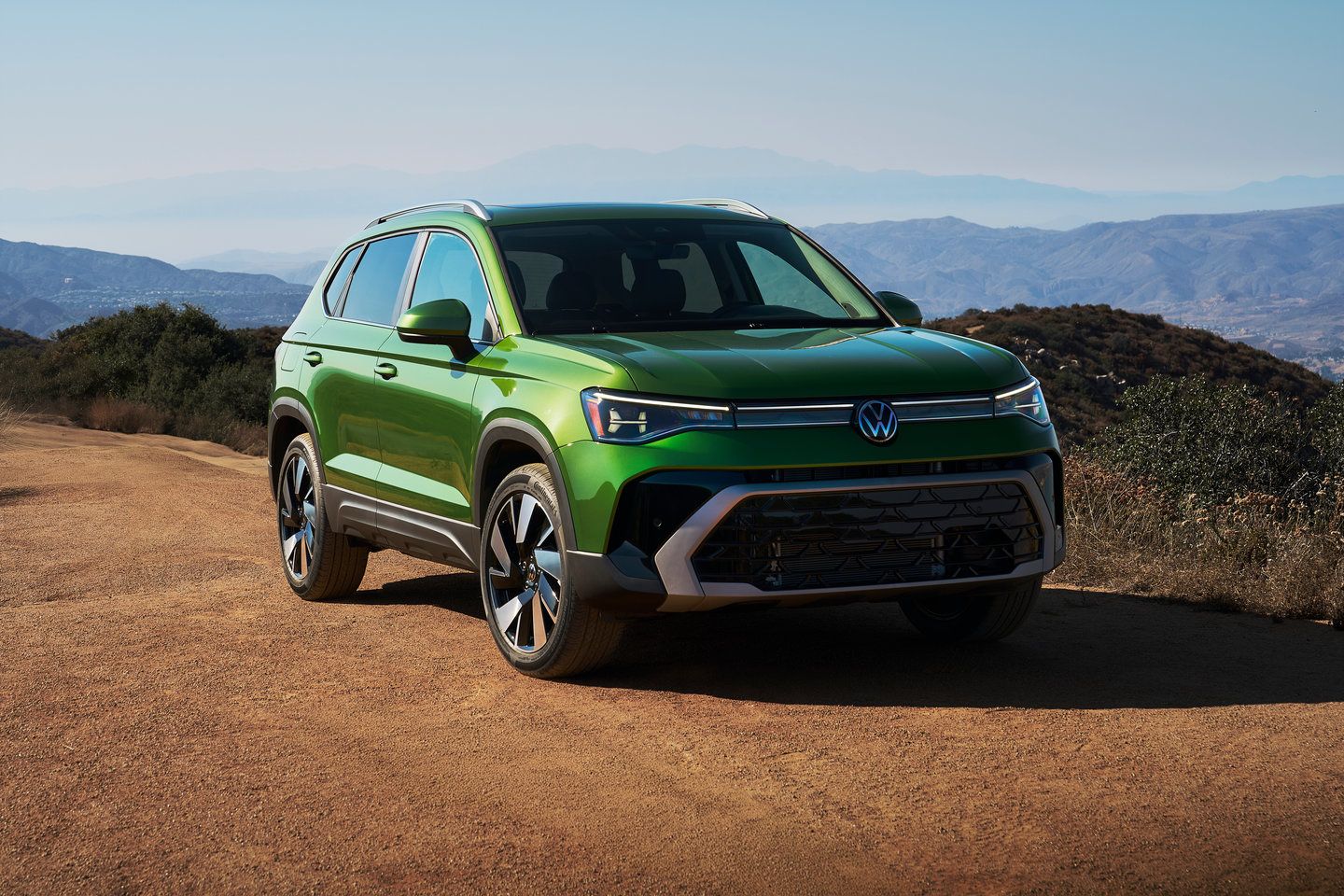
Your daily driving habits have a major impact on fuel consumption. City driving involves more stop-and-go traffic, while highway driving allows for steady speeds. NRCan rates the Taos FWD at 8.4 L/100 km in the city and 6.5 L/100 km on the highway—a significant difference that affects your annual fuel budget.
The following analysis shows annual fuel costs at 20,000 kilometres based on different city and highway driving ratios:
|
Driving Pattern
|
FWD L/100km
|
AWD L/100km
|
FWD Annual Cost
|
AWD Annual Cost
|
Difference
|
|
90% City / 10% Highway
|
8.2
|
9.2
|
$2,151.02
|
$2,405.16
|
$254.14
|
|
70% City / 30% Highway
|
7.8
|
8.7
|
$2,051.46
|
$2,289.88
|
$238.42
|
|
55% City / 45% Highway
|
7.5
|
8.4
|
$1,976.79
|
$2,203.42
|
$226.63
|
|
30% City / 70% Highway
|
7.1
|
7.9
|
$1,852.34
|
$2,059.32
|
$206.98
|
|
10% City / 90% Highway
|
6.7
|
7.4
|
$1,752.78
|
$1,944.04
|
$191.26
|
Key Insight: A driver who travels primarily on highways (10% city / 90% highway) spends $398 less annually on fuel than someone who drives mostly in the city (90% city / 10% highway) with the same Taos FWD model. This difference highlights how driving patterns can be as important as vehicle choice when budgeting fuel costs.
Understanding the Cost Differences
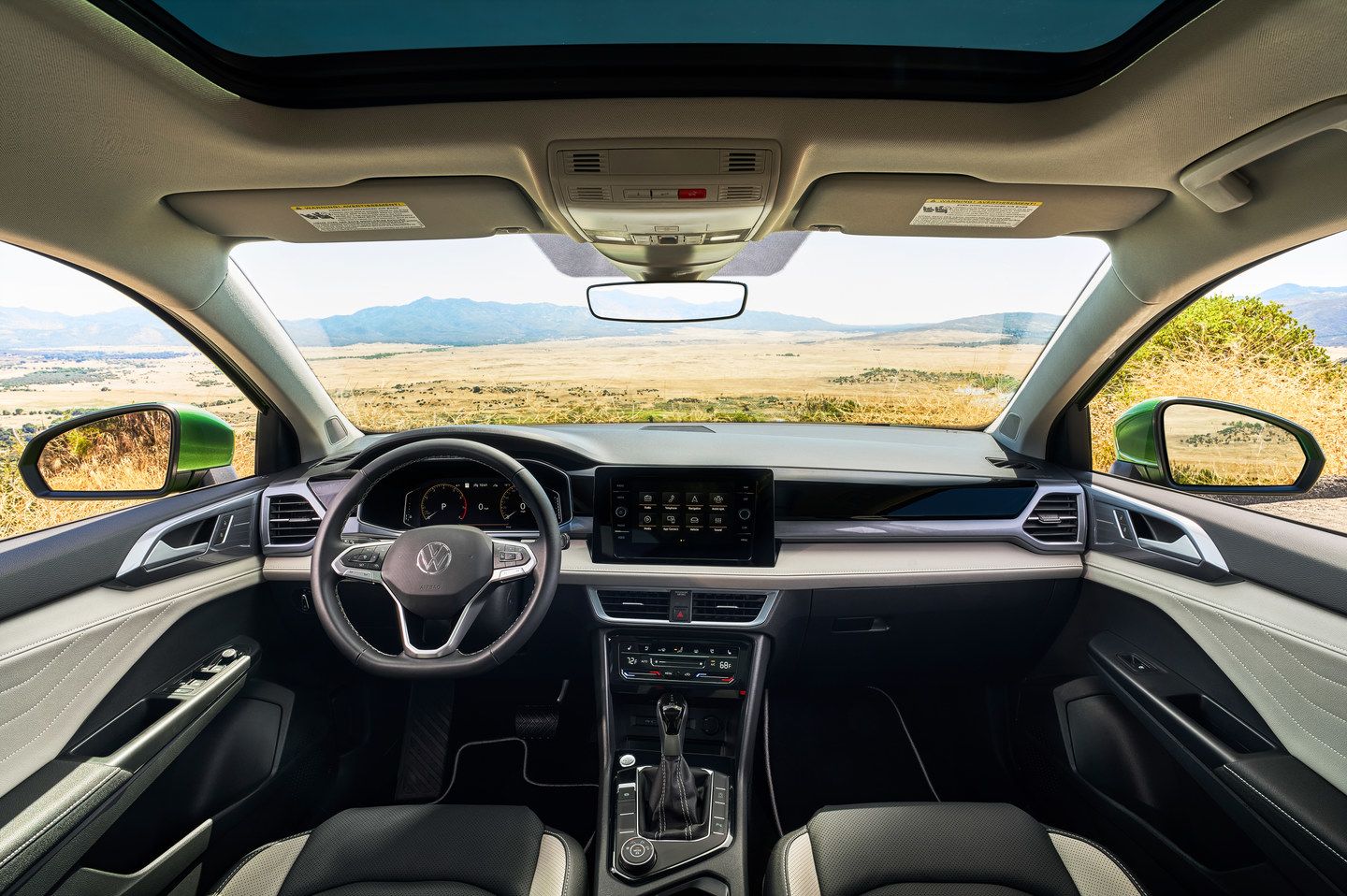
The fuel costs for your Taos depend on two main factors: drivetrain choice and driving patterns. First, looking at drivetrain differences, the FWD and 4MOTION models show consistent cost gaps across all driving patterns. Using the standard 55% city / 45% highway mix at 20,000 km annually, the FWD costs $1,977, while 4MOTION costs $2,203—a difference of $227 per year.
However, your driving habits create even larger cost variations. A primarily highway driver (10% city / 90% highway) spends $398 less annually than a city-focused driver (90% city / 10% highway) in the same FWD model. This means driving patterns can affect your fuel budget more than choosing between FWD and 4MOTION.
The choice becomes more complex considering that 4MOTION models include additional features beyond all-wheel drive capability. Trendline 4MOTION models come standard with 18-inch Kentucky alloy wheels (versus 17-inch on FWD), multi-link independent rear suspension, driving profile selection, and hill descent control.
Trim Level Fuel Efficiency Features
All 2025 Taos models include fuel-saving technologies as standard equipment:
- Start/stop system with regenerative braking automatically shuts off the engine during stops to reduce fuel consumption
- 8-speed automatic transmission optimizes gear ratios for efficient operation across driving conditions
- Aerodynamic improvements from the updated front-end design help reduce wind resistance at highway speeds
- Electronic stability control and other driver assistance systems optimize power delivery for maximum efficiency
The Taos also includes Volkswagen's IQ. The DRIVE suite has driver assistance features, including Adaptive Cruise Control with Stop and Go, which maintains consistent following distances and can improve highway fuel economy through smoother driving patterns.
Making the Right Choice for Your Needs
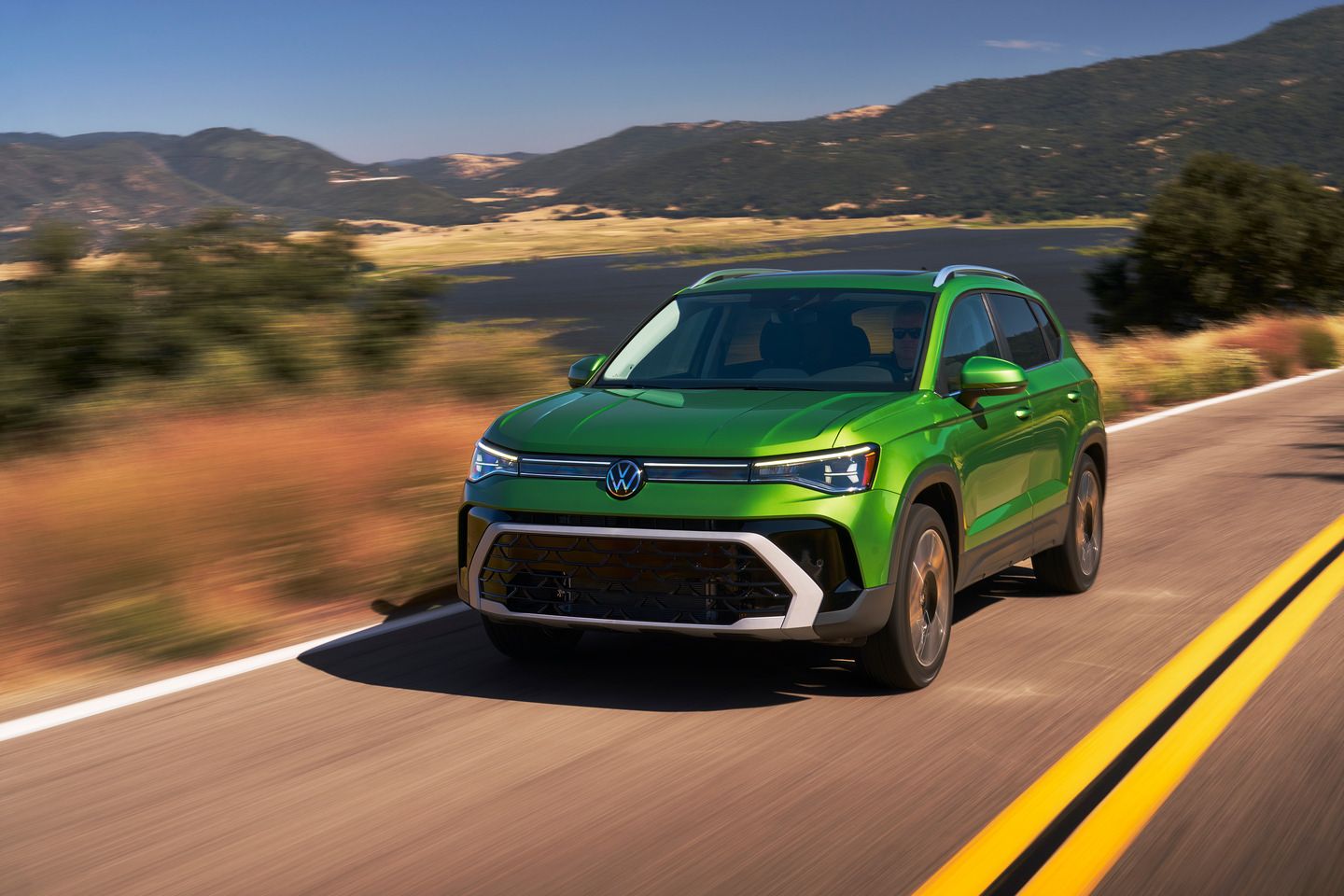
Your annual driving distance, typical road conditions, and driving patterns should guide your decision between FWD and 4MOTION models. The front-wheel drive Taos works well for drivers who primarily travel on paved roads and want maximum fuel efficiency. Highway-focused drivers see the biggest savings, with annual fuel costs as low as $1,753.
The 4MOTION all-wheel drive system benefits drivers regularly encountering snow, ice, gravel roads, or other challenging conditions. While fuel costs are higher across all driving patterns, the enhanced traction and confidence in adverse weather may justify the expense. The additional $2,000 initial cost provides year-round capability and peace of mind.
City drivers should factor higher fuel consumption into their budget regardless of drivetrain choice. Those who drive primarily in stop-and-go traffic will see fuel costs approaching $2,151 annually (FWD) or $2,405 (4MOTION), making efficiency features like the start/stop system more valuable.
Conclusion
The 2025 Volkswagen Taos offers competitive fuel economy in both FWD and 4MOTION configurations. Understanding your driving habits and annual mileage helps you calculate the true cost of ownership and choose the right drivetrain for your needs. Whether city-focused or highway-heavy, your driving pattern can create annual fuel cost differences of nearly $400, making it just as important as drivetrain selection.
With fuel costs ranging from $1,753 to $2,405 annually, depending on your driving distance, patterns, and drivetrain choice, the Taos provides predictable operating expenses in the compact SUV segment. Visit Humberview Volkswagen to explore the 2025 Taos lineup and discover which trim and drivetrain configuration matches your specific driving requirements.
You might also be interested in these blogs:
Volkswagen GTI vs. GLI vs. Golf R: 10 Key Differences for 2025
2025 Volkswagen Jetta GLI: 10 Things It Does Differently Compared to the Jetta
2025 Volkswagen Golf R Black Edition: Unique Features for a Unique Icon



